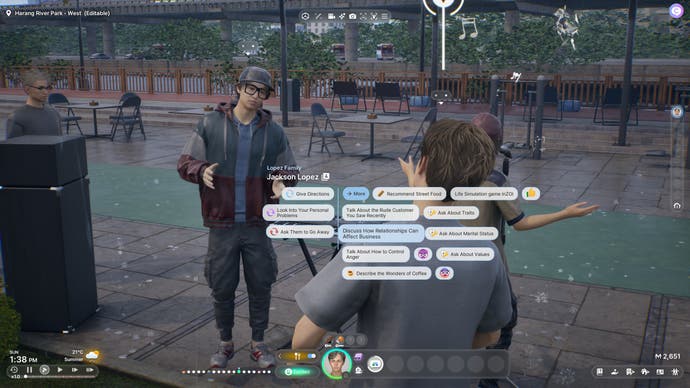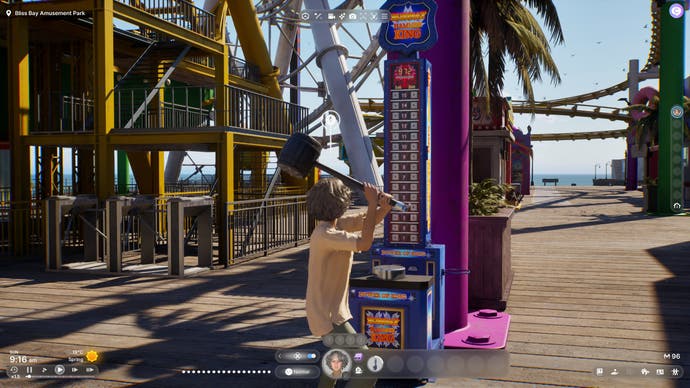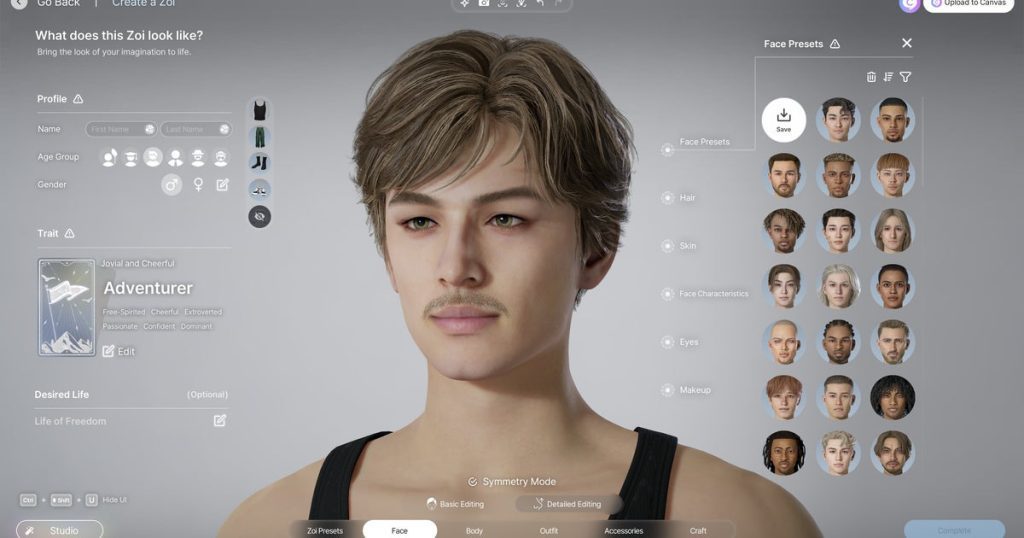A New Era for Life Simulators
It’s often said that you wait for ages for a competitor to The Sims, and suddenly, three come at once. The charming Tiny Life is already available in early access, while the cozy game Paralives is set to launch later this year. The first major contender in this wave is Krafton’s InZoi, a high-budget spin on the traditional life simulation genre. Boasting impressive graphics and a seamless world experience, it raises the question: Can it dethrone The Sims? After spending around six hours with the game, I’m uncertain.
On the surface, InZoi hits many of the right notes. While it does not introduce many groundbreaking ideas—save for a confusing city-wide karma system—the game presents a polished package that feels more like a worthy successor to Maxis’ cherished The Sims 3 than the official sequels. The game’s expansive worlds offer seamless navigation, although the vastness often highlights a lack of significant points of interest, leading to quick monotony. However, InZoi’s customization options are a notable strength; virtually any item can be customized with player-defined colors, materials, and designs. Players can furnish public spaces with the same ease as their homes, modifying city features like flora, billboards, and seasonal decorations, offering a rich experience for creativity enthusiasts.
Visually, InZoi is impressive, capitalizing on photorealistic aesthetics made possible by Unreal Engine 5. The dazzling sun reflecting off modern skyscrapers and the captivating beaches of Bliss Bay create a vivid atmosphere, distinguishing it from competing games. Although the beauty of the visuals may not age as gracefully as the stylized charm of The Sims 4, InZoi’s detailed environments create a realistic sense of life, especially when players control their Zois from a ground-level perspective.
However, the game falls short in terms of engaging interactions. Like its predecessors, InZoi creates its life simulation through various simple interactions, where players will click on items and choose contextual options. These interactions yield simple numerical results; Zois perform tasks like painting or creatively goofing around. Their needs—sleeping, eating, and hygiene—are addressed, but the depiction of everyday activities lacks flair. The aforementioned oddities, such as Zois showering in towels, do not detract from gameplay, but the game largely feels like a familiar reworking rather than an innovative take on the genre. Nevertheless, the smooth realism helps provide a fresh twist on conventional gameplay.

Ultimately, InZoi feels quite lifeless—its flashy design doesn’t compensate for a lack of character. While The Sims thrives on chaos and unpredictable events, my experience in InZoi was devoid of memorable occurrences. I wandered through desolate streets, visited ordinary landmarks, and struggled to form friendships without exceptional events to experience. The slow-paced in-game clock only heightened my concern over how to fill the remaining virtual hours, offering little in the way of entertainment compared to the chaotic fun found in The Sims. While the absence of constant chaos in InZoi can feel refreshing, it leans too far in the opposite direction, lacking vitality.
Further complicating the experience, Krafton’s creative choice to present the game through the lens of a soulless corporate environment detracts from immersion. Starting the game as an office worker is an unappealing twist, with HR threatening repercussions for underperformance, which does little to foster engagement with the gameplay.

Moreover, the Zois themselves are dull characters; their uniqueness merely manifests as statistics rather than through their visible actions. This primarily stems from InZoi’s realistic tone, where subtle gestures replace The Sims’ expressive, exaggerated actions. The latter game allows players to witness emotional changes through observed behavior, while Zois come off as emotionless figures lacking depth. Thus, while InZoi’s graphics and customization features stand out, it struggles to invoke meaningful narratives or emotional engagement.
In conclusion, InZoi has disappointed me. Though its visual polish, extensive customization options, and the simple enjoyment of exploring beautifully crafted environments have their merits, they are overshadowed by the absence of relatable virtual interactions. However, I can sense potential within this framework—a solid base that could evolve into a more engaging experience. As this is just the early access phase, many unanswered questions remain about game monetization and the ability to foster a thriving modding community akin to The Sims. Nevertheless, I’m intrigued to see how Krafton will progress from here.



